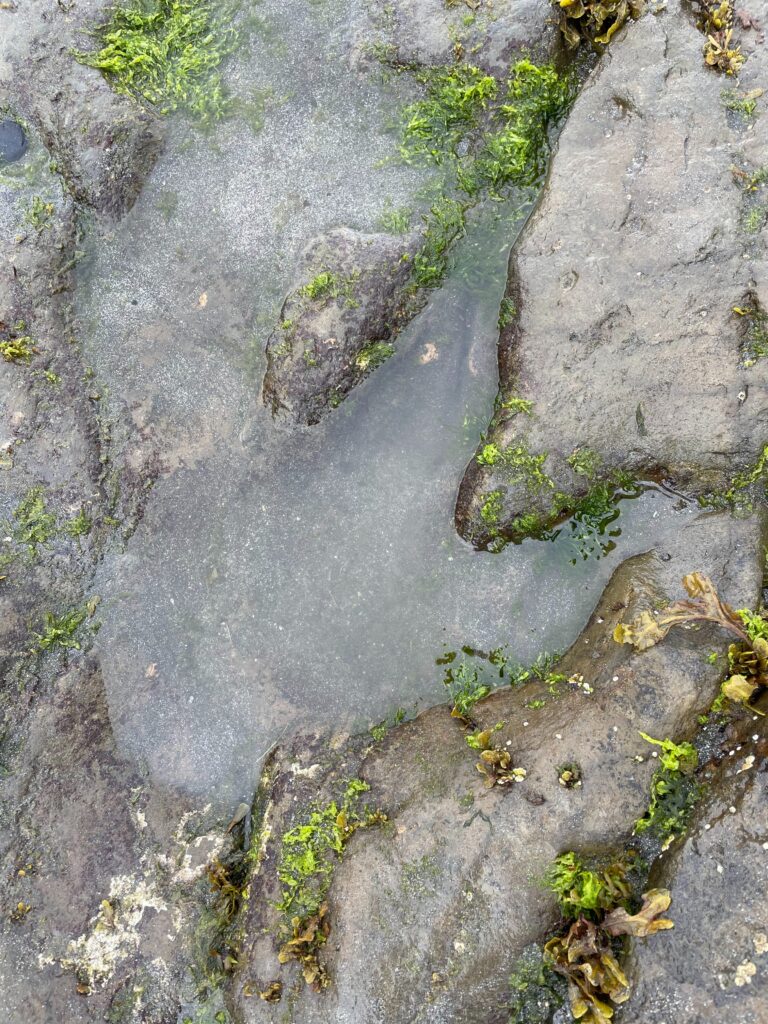
At Lark Quarry National Park in Australia, you’ll find a lot more than an underwhelming playground, featureless shop, disappointing cafe and multiple dog owners exercising their pets with ball launchers.
Out here in Queensland, it’s 110km to the nearest town Winton, and pretty much halfway between the east coast of Australia and Alice Springs. This means it’s far from most things, and extremely hot and dusty. BUT, what is at the park is the world’s only known dinosaur stampede site and thus the best collection of dinosaur footprints in the world. It’s believed these tracks are 95 million years old and the result of one large dinosaur chasing after a pack of smaller dinosaurs in search of some Mesozoic/mid-Cretaceous bush tucker.
It’s thought the ensuing mass stampede by around 150 smaller dinosaurs caused up to 4,000 muddy footprints to be imprinted on the ground next to a lake.
Today, these footprints are protected by a solar-powered shelter in a bid to protect them from being lost by wind, erosion and damage from any overtourism (which in itself isn’t much of a worry, seeing as you have to get to the site on 64km of covered road, and then 45km of unsealed track).

The right tracks
The tracks were discovered in the late 1970s, and are a mix of large footprints interspersed with smaller ones. They were thought to have occurred when one large carnivorous dinosaur espied a herd of smaller herbivores and decided to make a meal of some of them. However, this theory has now been disputed.
Identifying dinosaur tracks is difficult, especially when they are millions of years old and have been subject to significant geological and environmental changes. While there are standards for measuring theropods (carnivores that have longer, narrow toes) and ornithopods (herbivores which have shorter toes), it can still be challenging to classify them correctly.There’s plenty of big plans and belief in the startup. The company recently announced that it had raised $8m AUD (£4.5m) which was led by one of the country’s leading deep-tech companies, Main Sequence, in participation with Possible Ventures, Mistletoe and Albert Impact Ventures. Other investors have Melvin Benn (managing director of Festival Republic), model and philanthropist Karlie Kloss, and Tame Impala frontman, Kevin Parker. With all this potential and momentum, ULUU hopes to have launched its product-ready alternative to plastic in 1-2 years.
Identifying dinosaur tracks is difficult, especially when they are millions of years old and have been subject to significant geological and environmental changes.
That’s why researchers connected to tracking the footprints have trained an AI model with a convolutional neural network on 1,500 dinosaur footprints. It was tested on 36 tracks focussed on identifying the differences between theropods and ornithopods, and classifying them as one or the other. Researchers found that it outperformed humans, classifying 67% of tracks correctly, as opposed to humans which managed 57%.
The AI research found that the theory of the ravenous larger dinosaur tearing into smaller ones may have been erroneous to a point. Out of all of the tracks, only one was correctly classed as being that of a theropod. While this might leave the waters muddied as to which dinosaurs were actually there, it’s hoped that the AI results can now be used in conjunction with the work of an ichnologist – the branch of paleontology concerned with the study of fossilized tracks – to provide a more practical, on-the ground account within the park’s context, and ensure a better explanation can be given for the footprints.







